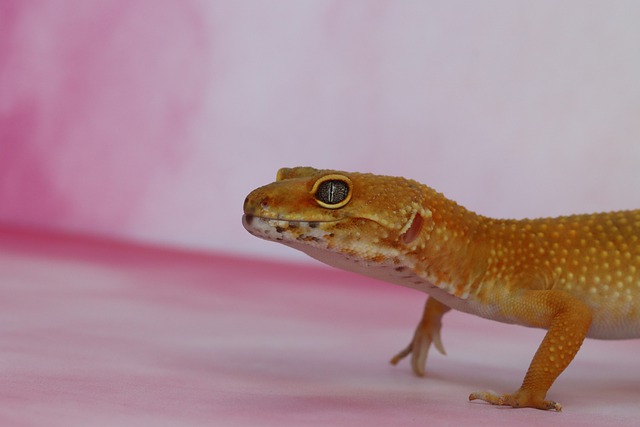Leopard geckos are one of the most popular pet lizards in the world. They are easy to care for and come in a variety of colors and patterns. When it comes to their health, leopard geckos are generally very hardy animals. However, there is one question that many leopard gecko owners have – is Neosporin safe for leopard geckos? In this blog post, we will take a look at the safety of Neosporin for leopard geckos and provide some tips on how to keep your lizard healthy!
Is Neosporin safe for leopard geckos?
The active ingredient in Neosporin is Bacitracin. This antibiotic is used to treat a variety of bacterial infections. It works by preventing the bacteria from producing certain proteins that are essential for their growth. While Bacitracin is considered safe for use in humans, there is no data on its safety in reptiles. Therefore, it is important to exercise caution when using this product on your leopard gecko.
There are a few things to keep in mind if you decide to use Neosporin on your leopard gecko. First, make sure that you only use a small amount of the product. A pea-sized amount should be sufficient. Second, avoid getting the ointment into your lizard’s eyes, nose, or mouth. Finally, don’t use Neosporin on open wounds or abrasions. If you have any concerns about using this product on your leopard gecko, talk to your veterinarian first.
In general, it is always best to err on the side of caution when it comes to medication and reptiles. If you are unsure about whether a particular product is safe for your lizard, consult with a reptile veterinarian before using it. They will be able to provide you with the most accurate information and help you make the best decision for your pet’s health!
5 Alternatives to Neosporin and why they may be better for your leopard gecko
While Neosporin may be a common household item, there are a few reasons why it might not be the best choice for your leopard gecko. Here are five alternatives to Neosporin that may be better for your pet:
Povidone-iodine is a popular antiseptic that can be found in many first aid kits. It is effective against bacteria, fungi, and viruses. It is also relatively inexpensive and easy to find.
Chlorhexidine is another antiseptic that is often used in veterinary medicine. It has a broad spectrum of activity against bacteria and fungi. It is available in both wipes and solutions.
Silver sulfadiazine is an antibiotic cream that is commonly used to treat burn victims. It is effective against a wide range of bacteria and fungi.
Betadine is an iodine-based antiseptic that is available over the counter. It is effective against bacteria, viruses, and fungi.
How to use the above antibiotic creams on your leopard gecko
To use any of the above creams on your leopard gecko, simply apply a small amount to the affected area. You may need to repeat this process several times a day until the infection clears. Be sure to follow the instructions on the packaging for the best results.
If you have any concerns about using any of these products on your leopard gecko, be sure to speak with your veterinarian first. They can help you choose the best option for your pet’s individual needs.
Conclusion
While Neosporin may be a common household item, there are a few reasons why it might not be the best choice for your leopard gecko. There are several alternatives available that may be better suited for your pet’s individual needs. Be sure to speak with your veterinarian if you have any concerns about using an antibiotic cream on your leopard gecko. They can help you choose the best option for your pet’s unique situation.
FAQ’s
Q: Can I use Neosporin on my leopard gecko?
A: While Neosporin may be a common household item, there are a few reasons why it might not be the best choice for your leopard gecko. There are several alternatives available that may be better suited for your pet’s individual needs. Be sure to speak with your veterinarian if you have any concerns about using an antibiotic cream on your leopard gecko. They can help you choose the best option for your pet’s unique situation.
Q: What are some alternatives to Neosporin?
A: Povidone-iodine, chlorhexidine, silver sulfadiazine, and betadine are all possible alternatives to Neosporin. Be sure to speak with your veterinarian before using any of these products on your leopard gecko, as they can help you choose the best option for your pet’s individual needs.
Q: How do I use an antibiotic cream on my leopard gecko?
A: To use any of the above creams on your leopard gecko, simply apply a small amount to the affected area. You may need to repeat this process several times a day until the infection clears. Be sure to follow the instructions on the packaging for the best results. If you have any concerns about using any of these products on your leopard gecko, be sure to speak with your veterinarian first. They can help you choose the best option for your pet’s individual needs.
Q: Will my leopard gecko need to see a veterinarian if I use an antibiotic cream?
A: While most leopard geckos will not need to see a veterinarian if they are using an antibiotic cream, it is always best to err on the side of caution. If you have any concerns about using any of these products on your leopard gecko, be sure to speak with your veterinarian first. They can help you choose the best option for your pet’s individual needs.




